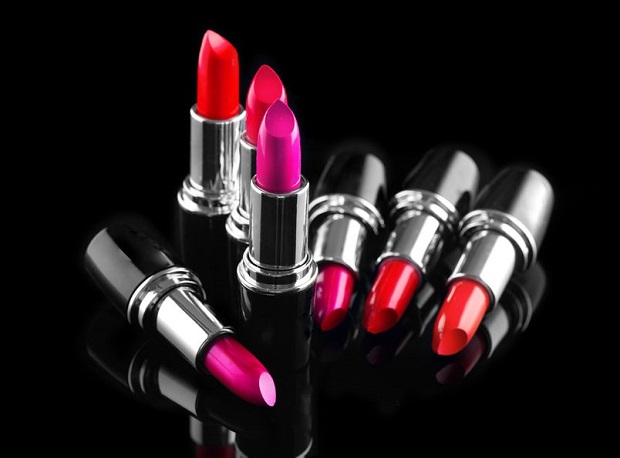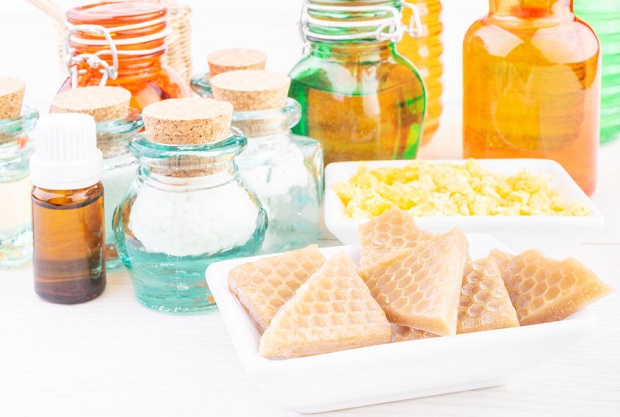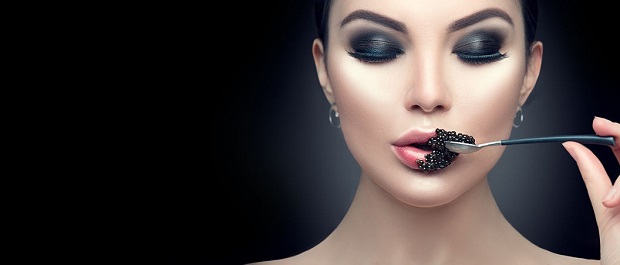
What is lipstick made of? You should care – you likely ingest approximately four to nine pounds of it in your lifetime! You may be surprised to discover some of the ingredients added to your favorite cosmetics. Discover what ingredients you should look for when purchasing your next tube of lipstick.
A Woman Eats How Much Lipstick?!
Most would grimace at the thought of adding cosmetics to their diets, but did you know that a woman who wears lipstick inadvertently ingests about four pounds of lipstick in a lifetime? Though the actual expert source for this commonly quoted statistic could not be located, the earliest source available traces back to its publication in Glamour Magazine in 2002. Other sources claim that the number is as high as nine pounds!
Basic Ingredients in Most Lipsticks

The ingredients in lipstick vary considerably between brands. Lipsticks contain varying quantities of waxes, oils, and emollients, an agent that soothes the skin. Each manufacturer utilizes a combination of the three in various proportions to formulate the base for their unique brand. The proportions utilized give the lipsticks their texture. For example, matte lipsticks have a high concentration of wax, while crème lipsticks have a higher concentration of oils.
Wax: The original beeswax used in most formulas to give lipstick its shape is, in many cases, now a combination of different waxes, including carnauba wax, which is resistant to melting, and new beeswax called Ultrabee that is more transfer-resistant.
Oil: Castor oil is a favorite of many manufacturers, replacing the use of lanolin and petrolatum.
Emollients: Emollients have expanded the list of ingredients, which traditionally included castor oil and lanolin, to include brand-name moisturizers.
What’s the Controversy?

Other ingredients added to cosmetics, such as those used for colorings, have always raised concerns and some very strong opposition. Some lipsticks contain ingredients that have been identified as known carcinogens or as containing lead.
Known Carcinogens You May Find in Cosmetics
- Formaldehyde
- Coal tar: Used as a colorant. You will find these in the form of letters followed by a color and/or number. Look for FD&C or D&C
- Benzene
- Nitrosamines: often listed as ingredients with TEA or DEA in the name
- Talc
The Lead in Lipstick Controversy

The Campaign for Safe Cosmetics conducted an independent study and found that 61 percent of the 33 lipsticks tested contained some amount of lead. The group is actively lobbying the FDA to act on the grounds that no amount of lead ingested is safe.
Review Campaign for Safe Cosmetics Findings: A Poison Kiss: The Problem with Lead in Lipsticks
The FDA conducted its own study, and though it found similar lead results, it does not find the lead levels to be a safety concern. Though the FDA does not have set limits for contaminants such as lead, it does set specifications. FDA bases its approval of additives on the use and estimated consumer exposure resulting from the use. In the case of lead in lipstick, the FDA finds that because lipstick is intended for topical use and is only ingested in very small quantities, the lead levels found in lipstick are not a safety concern.
Resources
“Don’t Pucker Up: Lead in Lipstick.” Campaign for Safe Cosmetics. N.p., n.d. Web. 27 Feb 2020. http://www.safecosmetics.org/article.php?id=223.
Edwards, D. “What is the chemical composition of lipstick?” General Chemistry Online. N.p., n.d.
Web. 27 Feb 2020. antoine.frostburg.edu/chem/senese/101/consumer/faq/lipstick-composition.shtml
“Limiting Lead in Lipstick and Other Cosmetics.” U S Food and Drug Administration. N.p., n.d.
Web. 27 Feb 2020. http://www.fda.gov/Cosmetics/ProductandIngredientSafety/ProductInformation/ucm137224.htm.
Schaffer, Sarah. “Reading Our Lips: The History of Lipstick Regulation in Western Seats of Power.” LEDA at Harvard Law School. N.p., 19 May 2006. Web. 8 Apr. 2010. <leda.law.harvard.edu/leda/data/788/Schaffer06.html>.





